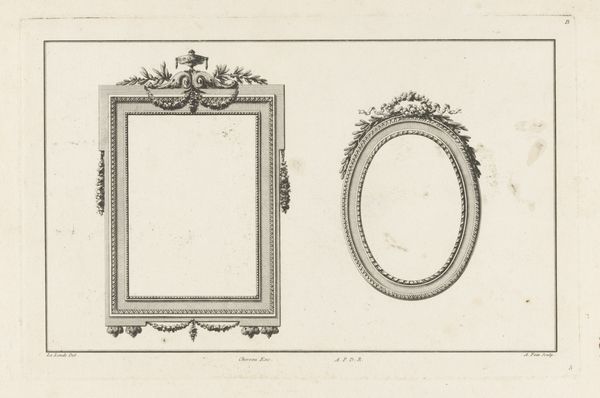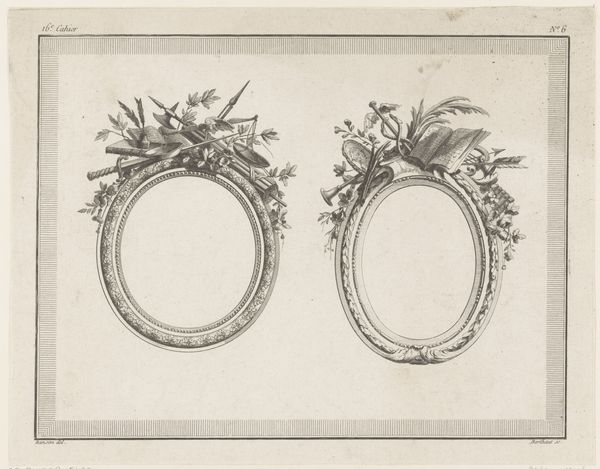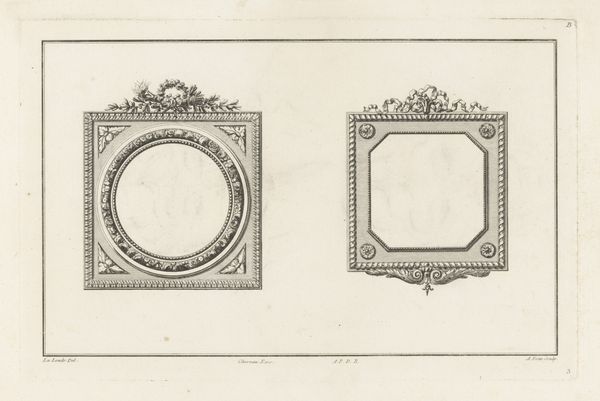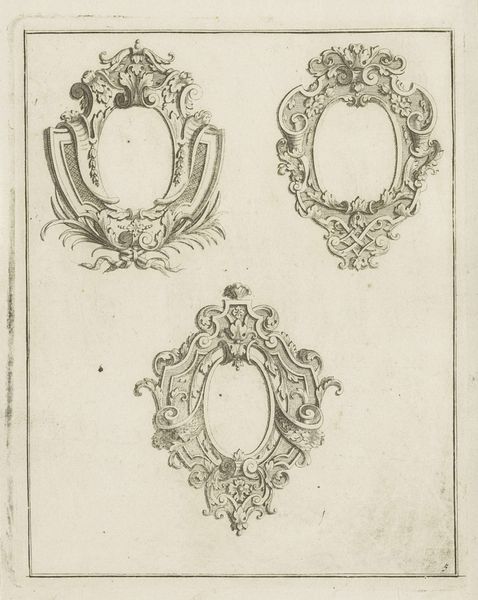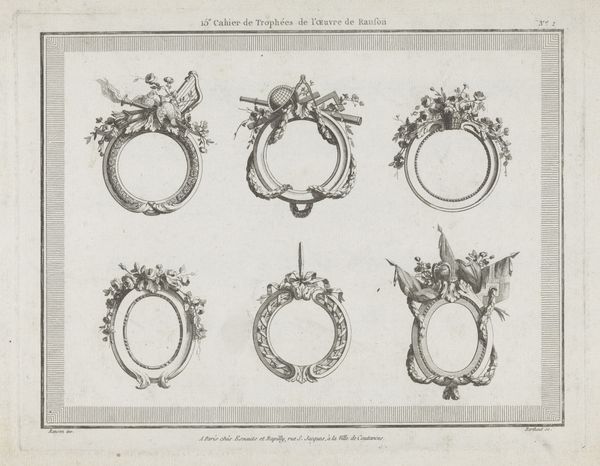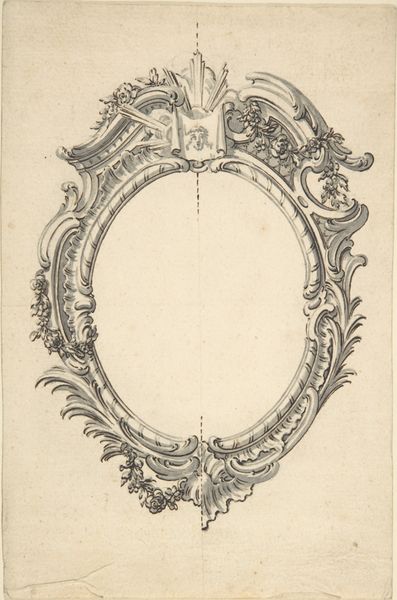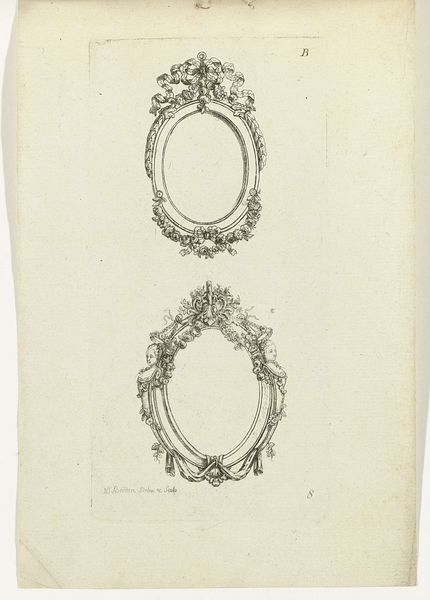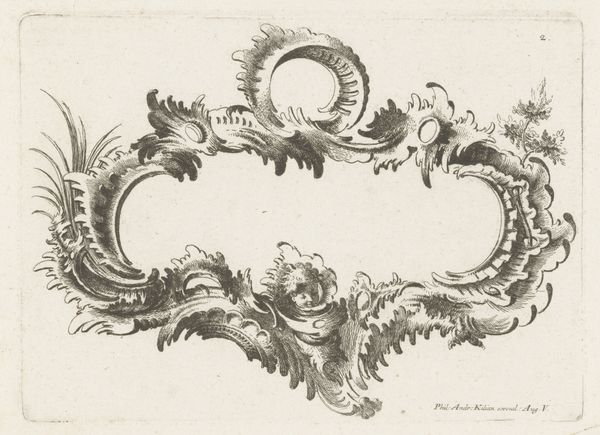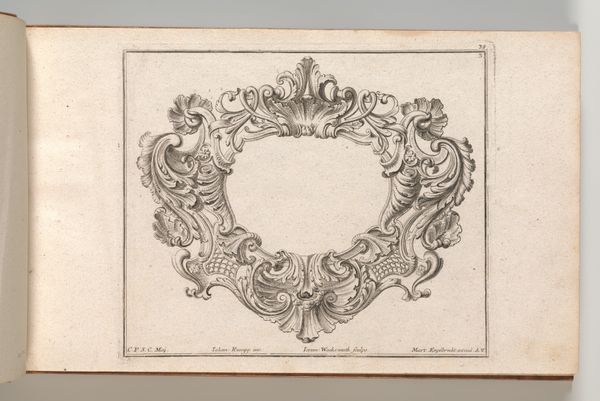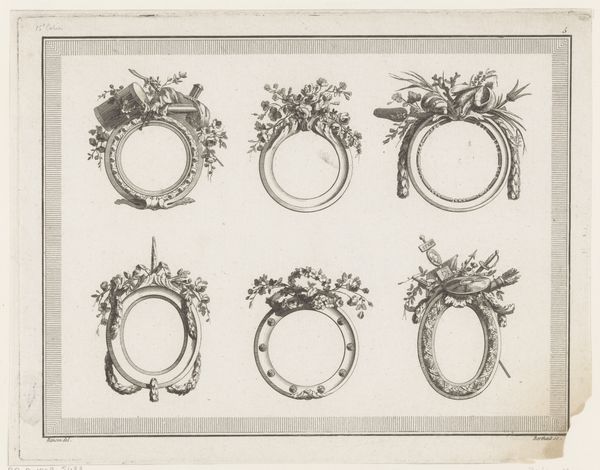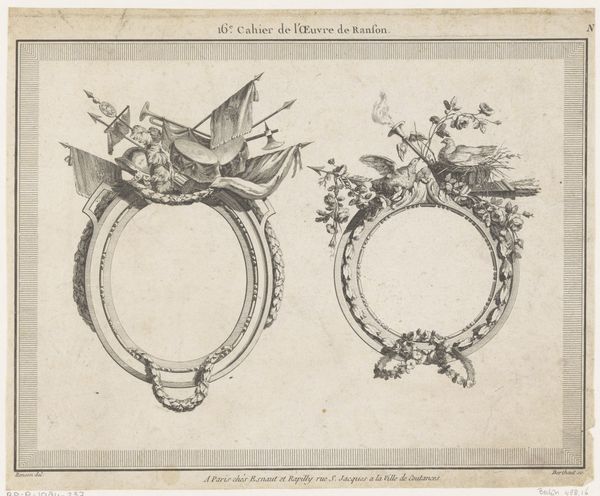
print, engraving
#
neoclacissism
# print
#
decorative-art
#
engraving
Dimensions: height 223 mm, width 344 mm
Copyright: Rijks Museum: Open Domain
Curator: Right, let’s take a look at this print, shall we? It’s entitled “Twee ronde omlijstingen,” which translates to "Two Round Frames,” crafted by Augustin Foin between 1784 and 1785. It's an engraving, here in the Rijksmuseum. Editor: Hmm, they remind me of looking into a pond, if a pond could somehow hold only beauty and be perfectly still. I wonder, were these actual frames? Curator: More likely, they served as models, particularly in a period deeply engaged with neoclassicism. The print format allowed for broad dissemination of designs and stylistic concepts, facilitating their uptake by artisans and workshops across various locations and classes. It is interesting to think how people would receive artmaking blueprints at the time. Editor: I get it. Like architectural renderings—these were blueprints for… prettiness. There's an aspirational quality, right? These aren't just frames; they represent the *idea* of a perfect frame, like something Marie Antoinette would put her portrait in. Curator: Precisely. It reflects a world obsessed with refinement. Think of the political undertones during the Enlightenment! Decoration as power, even control. Editor: I think, sometimes, the power isn’t political but personal, don’t you? Like a mirror reflects not only light but also the beholder’s self. We adorn what we deem most valuable. A picture of our child, a painting from our favorite artist, to reflect our soul in a certain light. Curator: Very insightful. In our contemporary discourse, though, there is more value attached to artistic autonomy rather than this adherence to formal models. But in that period this balance and symmetry signaled wealth. Editor: That makes me reflect how, today, the power of something plain can also feel radical... Thank you. That engraving just started to shout louder. Curator: A complex period of aesthetics; reflecting upon the role of decoration—certainly a lot to consider!
Comments
No comments
Be the first to comment and join the conversation on the ultimate creative platform.

